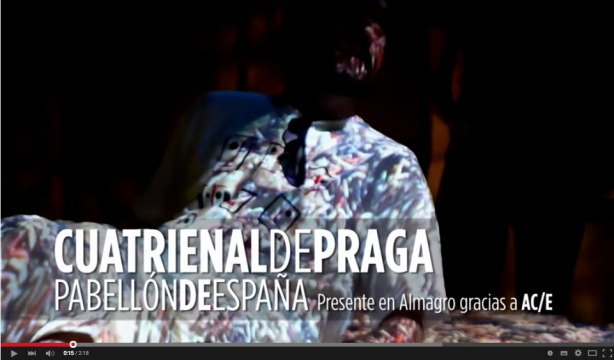The exhibition, curated by stage designer José Luis Raymond, who teaches this discipline at the Spanish drama school RESAD (Real Escuela Superior de Arte Dramático), is structured into eight thematic modules designed by Zuloark architects. Each of these modules includes a video montage and ambient sound.
Stage design has come to play a prominent role in Spanish contemporary stagecraft over the past five years. The pursuit of new ways of telling stories has led Spanish stage designers to explore and develop sets that reflect their creative thought. Their ideas attest to the artistic development Spain is currently witnessing. Society is alive and constantly changing. Stage design, as a vehicle for communication and artistic expression, is not unaffected by these changes. In this respect the role played by art schools has been of paramount importance in training the new generations of Spanish stage designers.
Thematic modules:
Light and space
Illumination can be a powerful creator of stage spaces. It does not just involve providing light but how light, shadows, optical distortions and reflections produce an image that is fleeting but creates possibilities, locations and meanings.
Object and scene
A few lines and a few elements can express the deep-seated content of things. The sacred content that is not found in a place itself but in the experience of it. Everything is important in achieving the effect. Size does not matter.
Representative spaces
Stage design is an act of communication; an exploration of reality that starts up a dialogue with the text of the play, thanks to which different visions can be formed: objective and subjective, ours and others’.
Audio-visual spaces or audio-visual as a space
Multimedia stage devices broaden the field of signification of stage performance by incorporating images, icons, texts and sound spaces through the use of photography, film, video and digital images.
Stage design in Spanish musicals
Music, the most spiritual art, makes it possible to enter the inferno of spatial matter. And, more importantly, successfully escape from it thanks to the richness of the music scene and its kinetic and dynamic nature.
Space, body and movement
The body moving across the stage presents us with different perspectives, surfaces and sensations. Projecting a space that loses all its edges to become a fluid plane that is more complex and ambiguous but full of meanings.
Spaces and urban interventions
The relationship between the theatre and cities has been close since its mythical origins: popular festivities. Thanks to mobile settings and changing connections, it steeps stagecraft in sensoriality and communion.
Costume as a space
The theatre space materialised by the movement of textiles. Dimensions, colours, adornments, masks and other accessories can transform actors into veritable moving stage sets.
The exhibition was initially shown at Prague Quadrennial (PQ 2015), the most important stage design and theatre architecture competition in the world, as part of Spain’s programme. The theme of the Quadrennial was ‘From places to non-places’ – scenography as a meeting place for audience and theatre, a place of socio-political importance and a place where proposals are put forward. It included a thirty-square-metre space in which a particular funerary monument presided by the word ‘Muérete’ (Die) was erected. The idea was that ‘in today’s changing society, anyone who does not accept the reality of progress will be dead as a citizen’.






